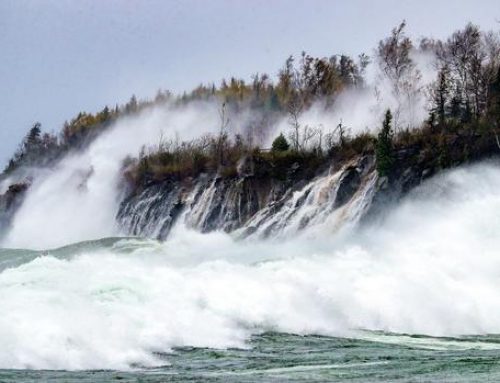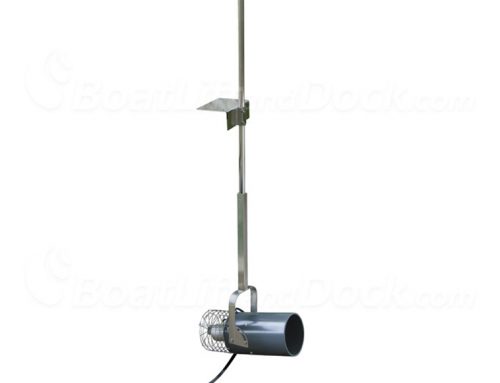When it comes to choosing the right free standing boat lift for your boating needs you may find the decision a difficult one. However, in reality there are only a few details that you will need to consider to guarantee that you get the right lift for the job. Although few, these details are very important; these are:
- The Type of Craft
- The Dry Weight of the craft to be lifted
- The Length and Beam Width of the craft
- The Hull Style of the craft
- The Water Depth where the lift will be positioned
- The Bottom Conditions where the lift will be positioned
Note: We have covered some of this material in “Choosing the Right Boat Lift for your Boat”, however, we felt that an update was in order. In addition, we have provided some convenient links to related articles.
These are the primary considerations, those that are essential to get you going. If you have these details in order you will end up with a lift that will accommodate your specific craft, lift it effectively and safely, and work in the environment that you need it to. After you have determined which lift you need, then you can begin to outfit the lift according to your specific taste. That is, adding accessories that either makes using the lift more convenient or offer extra protection for your boat. We will discuss these briefly below, but first the necessary details.
Note: For questions or details about the type of boat you own or the specifications, consult your owner’s manual.
The Type of Craft:
The type of craft that you have will figure more in the determination of the Hull type; however, you should determine what type of boat you actually have at the outset to narrow your search for the appropriate boat lift. You will want to know if it is an inboard or outboard design and if you have changed the engines out, determine their weight as well.
The Dry Weight:
This term refers to the actual weight of the watercraft before you place fuel in the tank or add gear and/or passengers, etc. However, the dry weight doesn’t always include the motors, so if you have changed out your motors or installed more powerful, and often heavier units, you will need to consider this when determining the dry weight of your boat. The best thing to do is to check with the manufacturer and inquire how they determine the dry weight of the craft.
The Length and Beam width:
These figures will determine the size of the boat lift you need. The length of the boat will tell you the length of the Hull bunks or loading guides you will need. The beam width or the outside to outside measurement across your boat will determine the width of the lift between the uprights. This number is very important, as you want to be able to easily drive your boat onto the lift, allowing 4-6 inches on either side. These dimensions will also assist you in determining the length of the canopy frame you will require, making certain that your watercraft is protected from rain and sun.
Hull Style:
Basically, you want to determine if you have V-Hull design, Pontoon, Tri-toon, flat hull, as well as any fins or “Skegs” that may limit the type of lift you can use, this will help you determine the type of racking you will need on the cradle of the lift, that is, the assembly where the boat will rest and the part of the lift that will move the craft up and down.
Water Depth:
The environment that you will be placing and using the lift in is very important. The water depth will determine if you can place the unit in place for use or if you will need the additional extension legs for deeper water applications. In some instances, the water may be too deep for a free standing lift. If this is the case you may have to choose a floating unit or make other accommodations. If you have very shallow conditions, you will need to determine if the lift cradle and bottom framework of the lift will allow you to easily get your boat on the unit. If you need help determining if your water is too deep or shallow, it is best to contact a dealer to discuss the issue.
The Bottom Conditions:
The bottom conditions are the specifics relating to the type of lake or river bed you have. Determining this will help you choose the style of foot pad you will have on the lift. You may have a very rocky bottom or in allot of instance, excessive mud or muck. The stability of the lift is dependent on the base it sits on, so getting a solid seat for the lift is essential. Further, the slope or grade of the lake bottom is important. If you have a steep descent close to the shore you will have to consider this when placing and leveling the lift.
With these basic details you will be able to narrow your search for the right boat lift. Following this, you can then move on to some of the accessories and options that are available. We have discussed some of these in the following articles:
- Galvanized or Stainless – Boat Lift Cables
- Boat Lift Installation and Removal Helpers
- The Benefits of Owning A Boat Lift Jack
- Free Standing Boat Lift Motors for 2013
- Free Standing Boat Lift Motors for 2013 Continued
- OEM and Aftermarket Boat Lift Canopy Options
- OEM vs Aftermarket – Covers Continued
Another very useful resource is NADA Guides, a website that assists in getting the essential details about your watercraft.
© 2013 BoatLiftandDock.com






